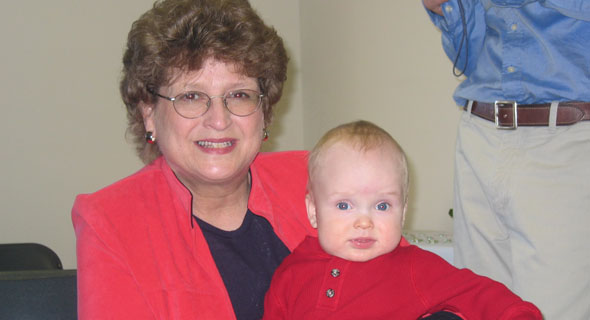
About Wanda
| Treatment Type | Nocturnal Home Hemodialysis |
| Gender | Female |
| Age | 50s |
| Marital Status | Married |
| Kids | No / Not at Home |
| Work Status | Not Working |
| Race | White |
| Pets | No |
| Cause | High BP |
| Travel | No |
| Poor Vision | No |
Wanda did in-center hemodialysis (HD) for a year before she began training to do home HD. She was apprehensive about doing her own dialysis, at first. But, now she prefers being on her own. "You couldn't pay me to go back to the clinic!" she claims.
More time for life
Wanda and her husband Kenny very much appreciate the freedom and control that home HD has brought back to their lives. "Since I've been home, I have more time for a home life," reports Wanda. "Fixing dinner is easier, not having to plan around going to the center for such long blocks of time. Socially, it is freeing in that if we would like to join friends for dinner we can. And, I like being able to start dialysis at a time that is convenient for me."
Wanda recalls feeling "overwhelmed at first." It took 7 weeks of training and the support of her nephrologist to get her over those early fears. She's glad she took the chance, though, because she feels better than she has in years and likes having her life back.
What is a nephrologist?
Wanda's doctor first told her she should see a nephrologist because she had protein in her urine. She was 49 years old, in remission from Crohn's disease. She didn't even know what a nephrologist was!
Wanda quickly learned that she had a kidney problem, likely caused by high blood pressure. She spent 6 years trying to keep her failing kidneys going with medicines and diet. She had very little energy and had to quit her job as a nanny. She also had repeated, and painful, attacks of gout. Then, her creatinine—which had been climbing slowly—hit 12.5. Her doctor set up her first dialysis session. Wanda had been saving her arm for a fistula, but the timing meant she had to start HD with a catheter. Things did not go well, and Wanda had to suffer through the placement and removal of a number of catheters to get one that would work. She had her first treatment in the hospital.
From in-center to home training
In time, Wanda settled into a standard HD schedule. "I was really lucky to have a good friend, Kathy, who helped me make it through," says Wanda. "Kathy and I would go to the center together. We'd play chess, cards, watch movies, and we got a lot of the other people there to smile along with us."
Wanda made friends in her clinic and liked the nursing staff. But, when her nephrologist said she might want to try home HD, she quickly agreed. "I didn't like being tied down for hours 3 times a week. It took up so much time for my husband to take time off work and drive me to and from the clinic."
Wanda and Kenny began training for home HD. "The training was intense," recalls Wanda. "We went 5 days a week and at least 7 hours a day." They ran 5 hours of dialysis and did all the set-up and disinfecting, too. "When we finished, we got a certificate," says Wanda. "And I think we earned it! We had to take tests and pass before they would let us go home."
At-home schedule
Doing HD at home has given Wanda and Kenny the chance to set their own schedule. Wanda dialyzes 5 nights a week and takes Wednesdays and Saturdays off. Each session lasts 7 hours—and starts about 10 pm.
Since Wanda has arthritis in her hands, Kenny does the fine motor tasks. He draws up the saline syringes to flush her catheter. Wanda sets up the machine during the day so it is ready to go at night. Kenny handles the equipment take-down the next morning. Each spends about 45 minutes per treatment.
In case of emergencies, Wanda and Kenny have phone numbers for the home dialysis nurse on call. They're trained to handle common problems on their own. And, just to be safe, Kenny does not leave Wanda alone when the machine is going. "He wants to be sure he's close by," she adds.
The frequent treatments let Wanda to eat and drink nearly anything she wants. In spite of other health problems, including Crohn's, Wanda claims "people who don't know that I'm on dialysis can hardly even tell that I'm sick."
Wanda still uses her catheter for access. "As long as it is working, I prefer it," explains Wanda, "I just don't like the pain of the needles."
On the first Tuesday of each month, Wanda goes into her dialysis clinic to have blood drawn and tested. She draws her own blood for testing—and takes water samples—on the 2nd Sunday night of each month. So far, her lab values are looking good. "But, if something isn't right, they call you and tell you to adjust your dialysis," she notes.
Future plans
Wanda prefers home HD to in-center, but hopes to have a transplant. Her antibody levels are high, so she is trying to raise funds to pay for antibody removal treatments. If they don't succeed, Wanda is glad she has learned how to do her own HD treatments. "Home dialysis has been a positive experience for me," she says, "and I can live with it."

